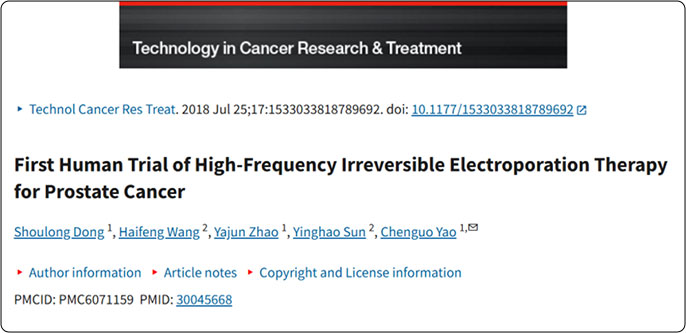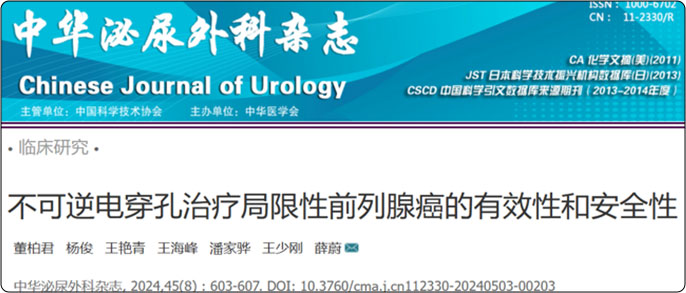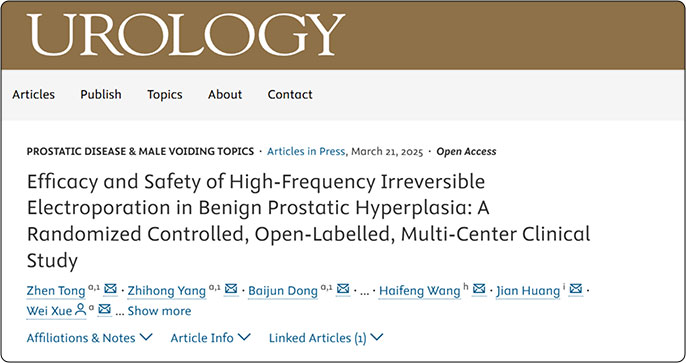Clinical Literature
Prostate cancer
1. Published in Technology in Cancer Research & Treatment in 2018 (Impact Factor: 2.8), titled "First Human Trial of High-Frequency Irreversible Electroporation Therapy for Prostate Cancer".
RESULTS:In 40 prostate cancer patients, no significant muscle contractions were observed during the procedure; 4-week post-ablation MRI and histopathological examination revealed preserved prostatic capsules and urethra, with major vessels intact; the lethal electric field threshold was determined to be 522 ± 74 V/cm.

2. Published in JAMA Surgery in 2022 (Impact Factor: 16.9), titled "Extended Focal Ablation of Localized Prostate Cancer With High-Frequency Irreversible Electroporation: A Nonrandomized Controlled Trial".
RESULTS:At 6 months postoperatively, the cohort of 100 patients demonstrated:
(1) A clinically significant prostate cancer (csPCa) rate of 6.0%
(2) A positive biopsy rate of 14%
(3) A median PSA level of 1.08 ng/mL
Both IPSS and IIEF scores demonstrated the superiority of the treatment cohort.The 6-month csPCa rate with H-FIRE ablation was significantly lower than historical controls using other energy platforms.

3. Published in Chinese Journal of Urology (2024), titled "Efficacy and Safety of Irreversible Electroporation for Localized Prostate Cancer"
RESULTS:All 128 procedures in this study were successfully completed, with 116 patients completing the 6-month follow-up. At 6 months postoperatively:
(1) Median PSA level was 1.58 ng/mL
(2) Biochemical recurrence occurred in 5 cases (4.31%)
(3) MRI and contrast-enhanced ultrasound examinations were all negative
(4) MRI detected suspicious lesions in 6 patients (6.12%):3 within the ablation zone,2 outside the ablation zone,1 involving both intra- and extra-ablation areas.

Prostatic Hyperplasia
1. Published in Urology in 2025 (Impact Factor: N/A), titled "Efficacy and Safety of High-Frequency Irreversible Electroporation in Benign Prostatic Hyperplasia: A Randomized Controlled, Open-Label, Multicenter Clinical Study"
RESULTS:The treatment group demonstrated significantly greater improvements in maximum urinary flow rate (Qmax) compared to the control group at:
(1) 1 month: 1.22 ± 5.50 mL/s vs 1.75 ± 4.29 mL/s
(2) 3 months: 8.41 ± 8.23 mL/s vs 2.61 ± 5.53 mL/s (p < 0.05)
(3) 12 months: 7.67 ± 7.63 mL/s vs 4.31 ± 6.76 mL/s (p < 0.05)
Except at 1-month follow-up, International Prostate Symptom Score (IPSS) improvements were significantly superior in the treatment group at both 3 and 12 months. A significant reduction in prostate volume was also observed in the treatment group at 3 months. Both groups exhibited low adverse event incidence rates.




